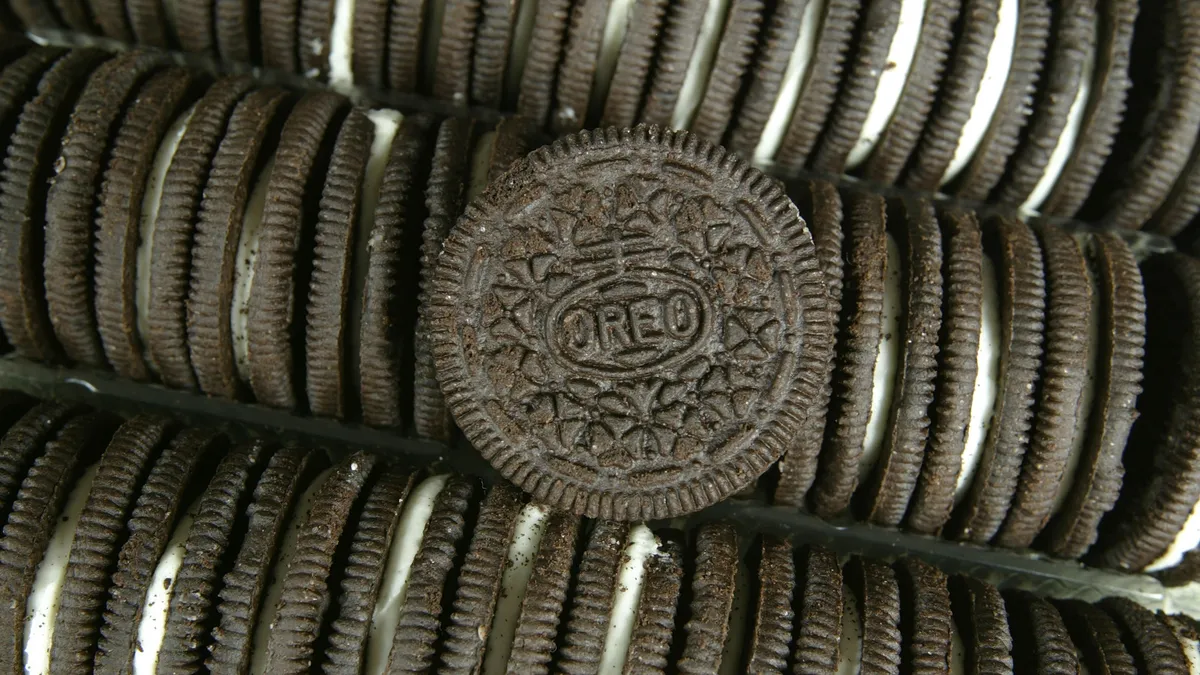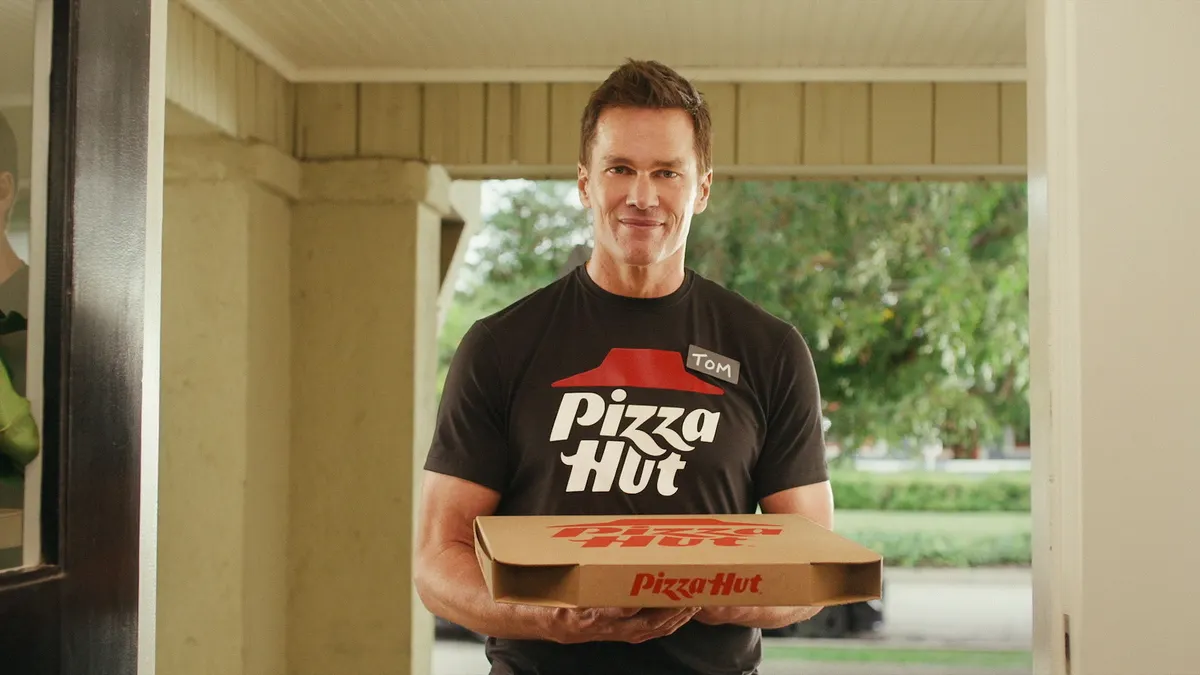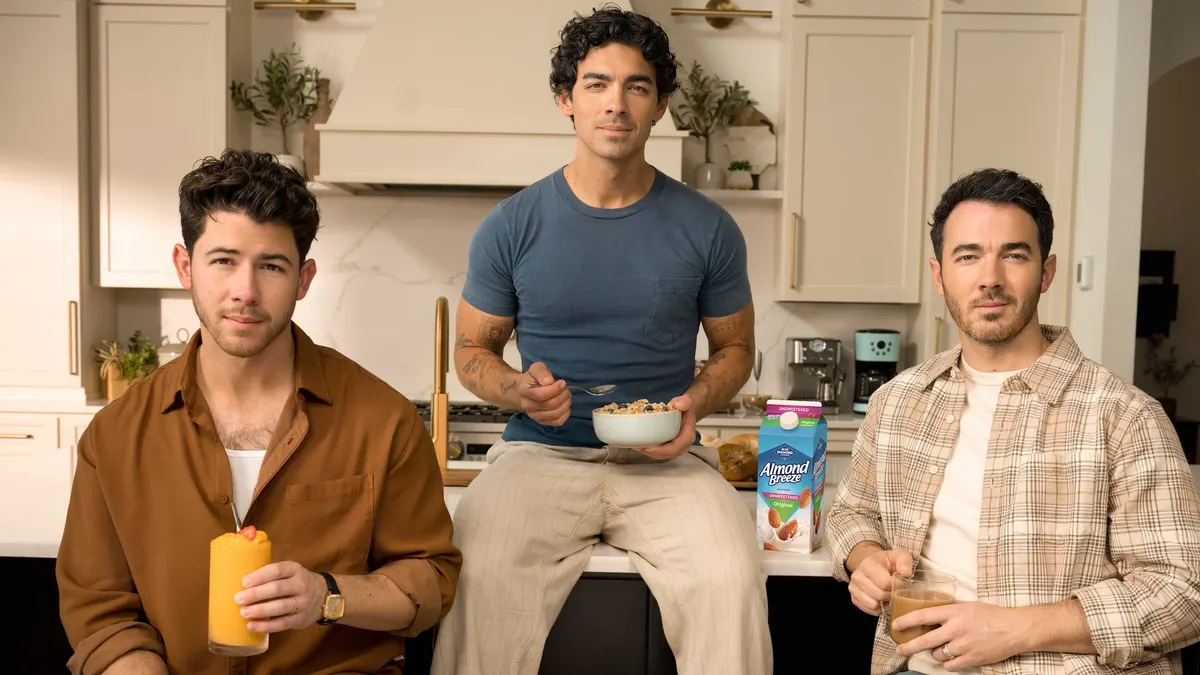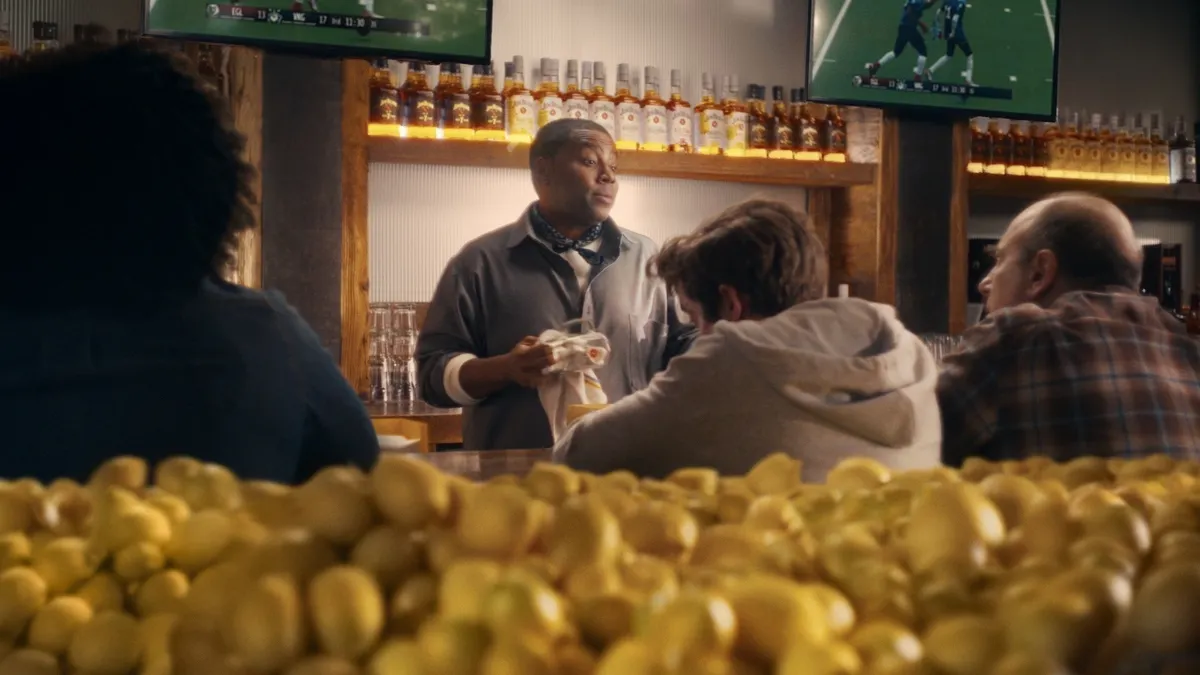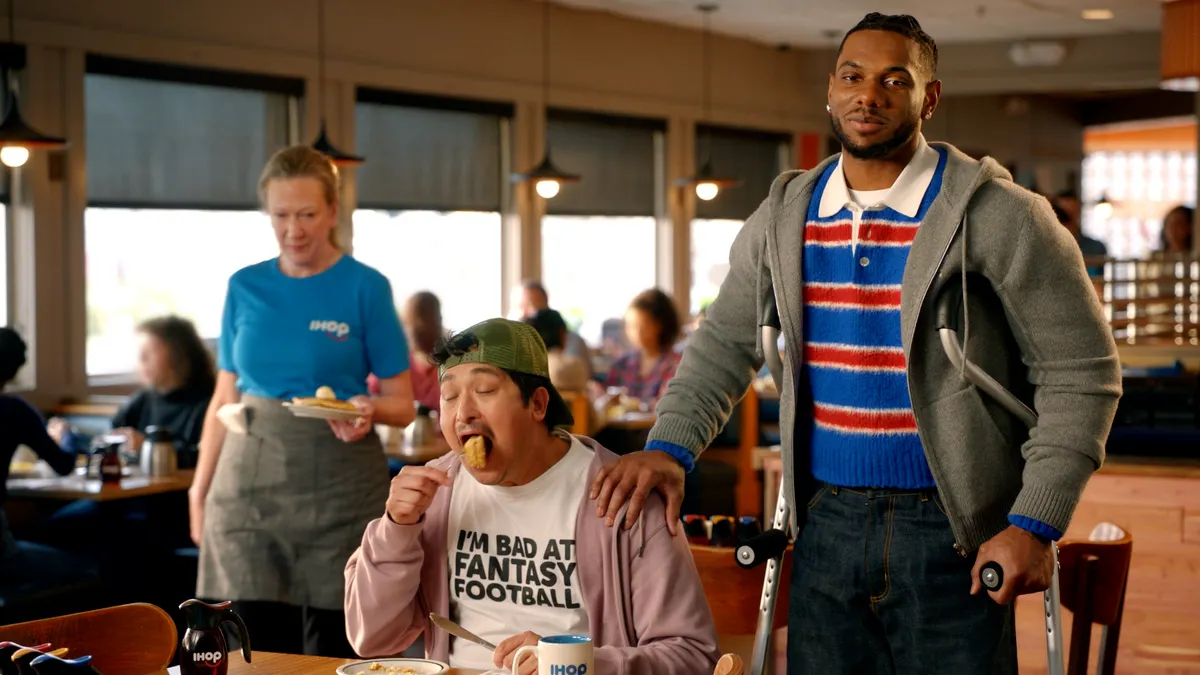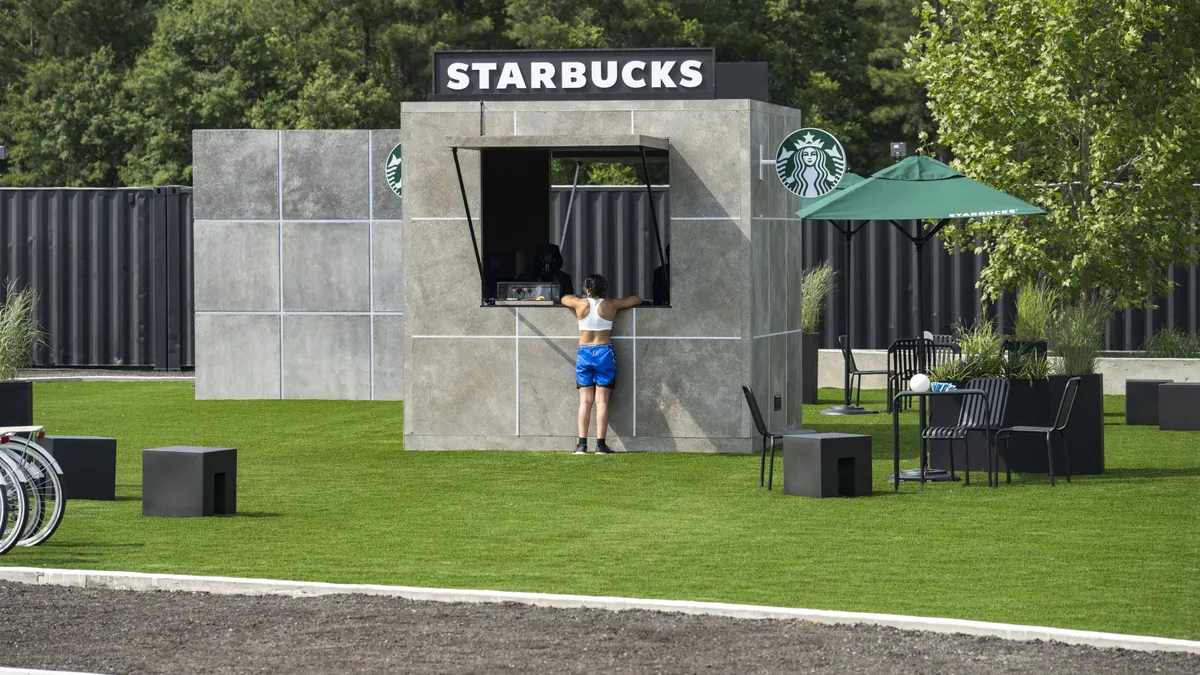Super Bowl LIV made for a tense showdown between the San Francisco 49ers and the victorious Kansas City Chiefs, but few marketing surprises turned up during a night that leaned heavily on humor, multibrand team-ups and newcomers in areas like politics and women's representation. The game's biggest winners were ultimately those that fell back on a largely traditional Super Bowl playbook, deploying a mix of celebrities, pop culture touchstones and a clear spotlight on product, or otherwise attempting to tug on heartstrings.
"Two big trends started in the first quarter and held through the rest of the game: nonstop movie lifts or references and what felt like a game-within-the-game to cram as many celebrities, characters or brand mascots into a single spot," Jay Suhr, chief creative officer at agency T3, wrote in emailed comments to Marketing Dive. "The result was a blur with few brands using their creative work to differentiate from everyone else doing the same thing."
For every fresh idea — Procter & Gamble's all-women Olay spot won social media, commanding 20% of the total brand conversation, per analytics firm Talkwalker — there was one that felt stale or poorly executed. P&G's fourth-quarter ad unifying several brands was interesting on paper, with the story playing out based on fan voting via a first-of-its-kind website. The result, however, was as messy as the chili-splattered walls that needed cleaning up in the narrative, pointing to the limitations of linking digital interactivity to traditional media. The night overall was surprisingly light on cross-channel hacking, per B-Reel's Group Executive Director Johan Dahlqvist, underpinning a general lack of media innovation.
"Creatively speaking, most of these ads felt painted broadly by similar brushes."

Scott Schneider
Praytell, chief creative officer
Other commercials edged close to incoherence, like Hard Rock International's ad directed by Michael Bay — one of a handful of spots that were tweaked last minute to avoid coming off as insensitive regarding the death of Kobe Bryant and eight others in a helicopter crash last week — or Planters' resurrection of Mr. Peanut as Baby Nut, complete with random dolphin noises. Planters' sister brand Heinz's decision to air four spots simultaneously, a bid at encouraging repeat viewing, was also met with confusion. Indifferent or befuddled responses to these efforts could sting advertisers particularly harshly given that Super Bowl LIV broadcaster Fox charged a record $5.6 million per 30-second spot.
"Creatively speaking, most of these ads felt painted broadly by similar brushes," Scott Schneider, chief creative officer at Praytell, said in emailed comments. "There seemed to be an omnipresent slight desperation in a good number of spots, with the apparent hope that their 'quirky' ads will spawn the cultural memes that keep their brands relevant for the next few months."
Humor and heart come out on top
During a night that's primarily about entertainment, a highlight was the boisterous halftime show from Jennifer Lopez and Shakira, which managed to sneak in subtle political messaging without dampening the fun. In terms of brands that captured a similar lighthearted spirit, Jeep's third-quarter ad with Bill Murray reprising his role from "Groundhog Day" handily topped the USA Today Ad Meter with an average rating of 7.01.
Hyundai's celeb-heavy first-quarter spot "Smaht Pahk" that featured Chris Evans, John Krasinski, Rachel Dratch and David Ortiz trotting out Boston's signature accent landed at No. 2. "Groundhog Day," widely praised by industry watchers and well-timed to run on its namesake holiday, had more than 22 million YouTube views at press time, and is tracking at No. 2 on the video platform's trending board.
"Seeing Bill Murray reprise his role as Phil [Connors], and the juxtaposition of Jeep's message, 'no day is the same in a Jeep' was a great example of how to do it right in the Super Bowl," Jennifer Novick, head of marketing at SocialCode, said in emailed comments to Marketing Dive. "Hero celebrity, connect brand message to the truth of that story, and entertain, entertain, entertain."
The third slot on USA Today's closely-watched annual ranking was won by Google's "Loretta," about an elderly man recalling memories of his late wife through the help of tools like Google Assistant. The sparse tearjerker from the tech giant, which played during the second quarter, placed highly in Ipsos' biometric analysis of the most-potent ads as well, landing in second place with a max engagement level of 74%. It also was deemed the most effective ad by research firm Unruly, stoking intense emotional engagement among 49% of surveyed viewers.
"Google delivered high emotional value through 'Loretta,' a stripped-down demonstration spot that tapped into our fear of losing our loved ones — and our most beloved memories of them," Stephanie Burris, executive creative director at Marcus Thomas, said in comments to Marketing Dive. "The simplicity of the visuals and the unique quality of the elderly man's voice were a surprising (and welcome) break from the bombastic, star-studded spots that abounded in this year's Super Bowl."
Fit and simplicity provide an edge
Like Jeep and Hyundai, Amazon let celebs lead in an Alexa-focused spot with Hollywood couple Ellen DeGeneres and Portia de Rossi, making for one of the efforts that generated the most pre-game buzz. And Doritos continued its dance-themed creative from years' past with a Western-tinged showdown between Lil Nas X and actor Sam Elliott that received high marks from agency executives responding to Marketing Dive.
Why did these ads focused on star wattage play so well while a slew of others received a cooler response? Brand fit was paramount, experts said, but not always something taken into consideration during a night overloaded with cameos.
"Ideally a celebrity should have shared values with the brand and enhance the core idea."

Anselmo Ramos
GUT, chief creative officer and founder
"Having a celebrity is not an idea in itself. Ideally a celebrity should have shared values with the brand and enhance the core idea," Anselmo Ramos, chief creative officer and founder of agency GUT, said in comments to Marketing Dive. "Here's an acid test: If you could easily replace a celebrity with another one, it's usually not a good sign."
A simple formula combining a shared human experience with an emotional creative execution made ads from Doritos, Google and Microsoft stand out, said Shobha Sairam, VP, global chief strategy officer at The Community. Less successful were marketers who tried to cover all the bases by cramming in a combination of tactics, including special effects, celebrities, multiple brands, overwrought plots and nostalgia.
"The ones that are worth commenting on are the ones that came from a place of simplicity," Sairam said.
Multibrand team-ups score mixed results
One theme that emerged throughout Super Bowl LIV was multiple brands coming together to imbue their ads with bigger star power. This isn't a new idea, and it's one that's seen potentially diminishing returns as its power to disrupt wanes with repetition.
Frito-Lay's Chester Cheetah icon — essentially absent from Cheetos' own MC Hammer-starring ad — popped up among other notable names like wrestling star Ric Flair in an ad from fellow PepsiCo brand Sabra. P&G's aforementioned interactive ad, while generally a misfire, brought together Charmin, Bounty, Old Spice and others in a display of the Cincinnati-based marketer's shelf dominance.
Tide also ran multiple ads and intruded on other commercials with the help of actor Charlie Day, portraying a man panicked about when to clean a stain from his shirt. On top of running individual #LaundryLater spots at the start and end of the game, Tide had Day appear in promotions for AB InBev's Bud Light — hello, Bud Knight — Fox's "The Masked Singer" and Warner Bros.' "Wonder Woman 1984." This wasn't new territory for the brand, which rode to great success on the once-innovative concept two years ago with David Harbour. Still, Tide likely proved the strongest in execution and potential for brand recall.
"Tide was noticeably clever with four spots bringing back it's 'later fashion' in unexpected but appropriate spots throughout each of the four quarters," Simon Blanchard, professor of marketing at Georgetown's McDonough School of Business, said in emailed comments. "It's a lot of repeated exposure and really added to the impact for people who had seen the first commercial."
Some supergroup bets made for head-scratchers. Planters' funeral for Mr. Peanut — and the mascot's eventual resurrection as the Baby Yoda-like Baby Nut, who already has a dedicated merchandise page — saw appearances from P&G's Mr. Clean as well as fellow Kraft Heinz staples the Kool-Aid Man and Oscar Mayer Wienermobile. A band of familiar faces did little to offset the beleaguered campaign's anticlimatic finish.
"Planters limped into the Super Bowl after having to suspend its #RIPeanut campaign while people mourned a very real tragedy," Burris said. "The brand team couldn't have anticipated that, but after all of the hype about killing off Mr. Peanut, having the mascot be reborn as a baby peanut felt like an anticlimactic bait-and-switch, with no real value to the viewer."
Newcomers make uneven plays
Super Bowl LIV also saw a crop of newcomer brands and the possible unwelcome intrusion of politics during a night otherwise focused on letting viewers take their mind off of real-world problems.
Some of the lowest-rated spots on USA Today's Ad Meter roundup included: Quibi, in a worrying sign for the mobile-only video platform, which needs to better communicate what differentiates its services, plus ads from presidential candidate Mike Bloomberg (third-to-last) and incumbent Donald J. Trump (dead last).
"Politics and football have never shared the screen before, and this year's efforts proved that's probably a good thing," said Eric Weisberg, Doner's global chief creative officer. "Regardless of where you stand, I think we can all agree that the $10 million spent by both the Trump and Bloomberg campaigns would likely have been better spent elsewhere. Neither broke new ground and all three spots felt out of place and outmatched by the creativity and production values exhibited elsewhere."
"Politics and football have never shared the screen before, and this year's efforts proved that's probably a good thing."

Eric Weisberg
Doner, global chief creative officer
Pop-Tarts, making its first big game appearance with the help of "Queer Eye" star Jonathan Van Ness, burned out in the second-to-last place on the USA Today Ad Meter, signaling a fumble for the Kellogg-owned pastry label and its new pretzel offering.
"[T]his was a total miss for me on every level," wrote Chris Graves, chief creative officer at Team One. "They didn't really aim very high considering the venue. Not sure how Jonathan Van Ness is at all relevant here."
Pop-Tarts was not the only brand that attempted to use the Super Bowl to launch a new product but failed to make waves. Coke's ad for its new energy drink; PepsiCo's launch of zero-sugar versions of Pepsi and Mtn Dew; and Bud Light's new hard seltzer push fell flat, perhaps due to a disconnect between the new products and the celebrities enlisted to sell them.
Purpose-driven messaging largely misses the mark
Marketers have dabbled in purpose-driven messaging for several years, and the Super Bowl was not immune from the trend. However, the tactic seemed to yield few winners, with a handful of brands missing the mark on ads that attempted to tackle gender and sustainability.
"Brands seem lost on what they stand for," Scott Harkey, co-founder and managing partner at OH Partners, said in comments to Marketing Dive. "It's clear that brands understand that they need to stand for something, but they're struggling to figure out exactly what that means."
One ad cited by several industry experts that struggled in this way was Michelob Ultra Pure Gold's ad, which launched a program that ties farmers turning six square feet of farmland organic with each six-pack purchase. Instead of highlighting a good cause, the ad reflected poorly on a convoluted, small-ball approach to sustainability by a major conglomerate.
"Even with a hint of altruism, it was just an overproduced pitch to buy a six pack," T3's Suhr said. "I'm still trying to figure out how much impact six square feet of organic farmland will have or how much land could have been bought for $5+ million."
Similarly, two P&G brands — Secret and Olay — fumbled an opportunity to highlight gender inequality at an event whose viewership is close to 50% female. Neither Secret's gender-reveal "The Secret Kicker" nor Olay's lighthearted "Make Space For Women" seemed to handle the issue appropriately.
"I wish I liked that Secret spot more. I mean, I love fighting for equality and equity. But that spot did not feel empowering. It felt oddly dismissive and glib," Karen Costello, chief creative officer at The Martin Agency, posted on the app Fishbowl following the game.
Of the Olay ad, Jeff Vinick, EVP, executive creative director, at Deutsch New York said, "While its intentions were good and the contribution to Women Who Code is awesome, the execution seemed to make the women look unintelligent and silly."
A lone winner in purpose-driven efforts was Microsoft, which told the story of Katie Sowers, an offensive assistant coach for the San Francisco 49ers who became the first woman to coach in the Super Bowl on Sunday.
"Microsoft's NFL piece 'Be the One' was arguably the most relevant ad this year," said Anders Gustafsson, group creative director at BSSP.
"There's nothing new about this type of doc style narrative obviously, but the time and place made it really strong, seamlessly being a part of Katie Sowers story without ever feeling forced," Gustafsson added. "For brands pushing important causes like gender equality, I think 'story doing' instead of just 'story telling' will be crucial."






